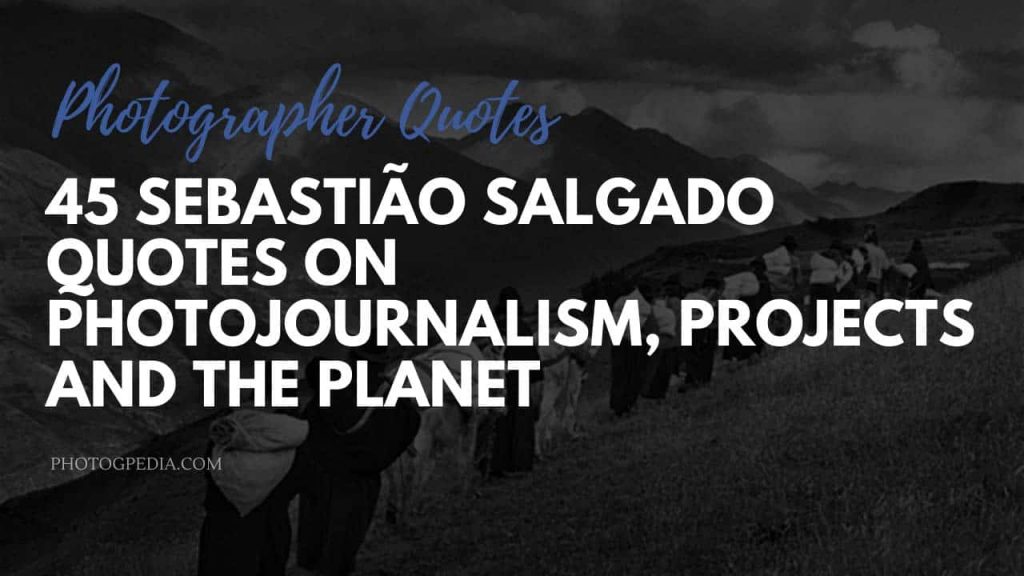Looking for the best Sebastiao Salgado quotes? Then you’ve come to the right place. Below we’ve put together a list of our favorite quotes from one of the greatest documentary photographers to inspire and help take your photography to the next level.
Sebastiao Salgado Quotes
The photographs are more a question than a reply.
I looked through a lens and ended up abandoning everything else.
I’m not an artist. An artist makes an object. Me, it’s not an object, I work in history, I’m a storyteller.
Your father and mother, when you were a child, they took precious photographs of you. They went to the shop on the corner to get them developed. That is a memory. That is photography.
The biggest danger for a photographer is if they start thinking they are important.
There comes a moment when it is no longer you who takes the photograph, but receives the way to do it quite naturally and fully.
The language that photography has is a formal language. Any photographer is doing something formal. If it’s formal, then it must be an aesthetic way to communicate.
Photography is full of symbolism, it’s a symbolic language. You have to be able to materialize all your thoughts in one single image.
I’m not a religious person. The language of photography is symbolic.
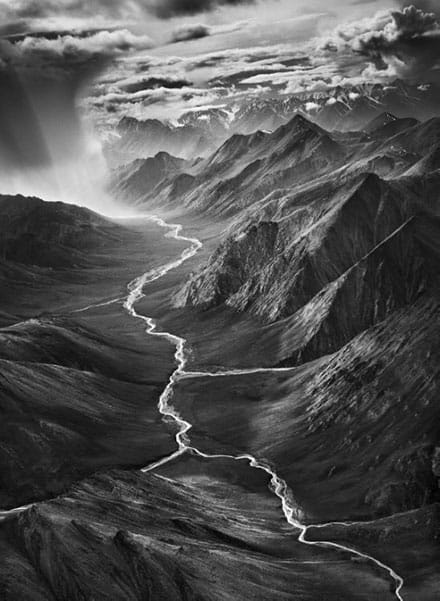
Quotes on Style and Technique
My way of photographing is my way of life. I photograph from my experience, my way of seeing things.
Of course, I won’t be abandoning photography, because it is my life.
Photography is not objective. It is deeply subjective – my photography is consistent ideologically and ethically with the person I am.
I work only in 35mm format. I have a small bag so I can carry all my films with me for one or two months. That means I am completely independent and free. Interview with Sebastiao Salgado, Ken Lassiter, 2004 [Before switching to digital]
I work with very fast film. I always close my diaphragm to give a huge depth of field. Volumes for me are very important. Reality, is full of depth of field.
You know where you’ll go, but you don’t know what you will bring back… Photography is one 250th of a second, there are a lot of variables. There must be light. There must be power. There must be personality if it’s a portrait. Interview with The Guardian, 2015
You photograph with all your ideology.
I don’t believe a person has a style. What people have is a way of photographing what is inside them. What is there comes out.
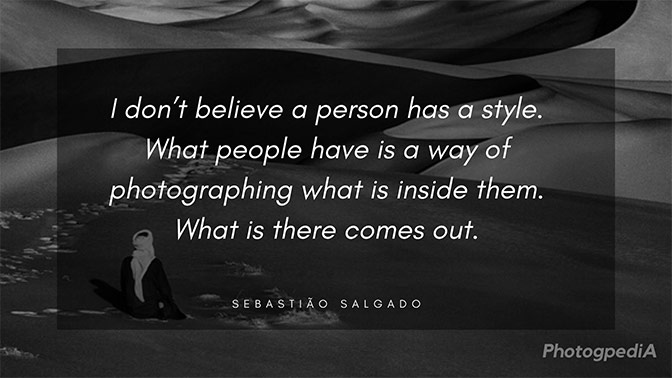
Photojournalism and Documentary Work
When I was just starting out, I met Cartier-Bresson. He wasn’t young in age but, in his mind, he was the youngest person I’d ever met. He told me it was necessary to trust my instincts, be inside my work, and set aside my ego. In the end, my photography turned out very different to his, but I believe we were coming from the same place.
It is a great honor for me to be compared to Henri Cartier-Bresson… But I believe there is a very big difference in the way we put ourselves inside the stories we photograph. He always strove for the decisive moment as being the most important. I always work for a group of pictures, to tell a story. If you ask which picture in a story I like most, it is impossible for me to tell you this. I don’t work for an individual picture. If I must select one individual picture for a client, it is very difficult for me.
I have been photographing the portrait of an end of an era, as machines and computers replace human workers. What we have in these pictures is an archeology.
As long as there’s journalism, there will be photojournalism. They’re two halves of a whole. And although they certainly won’t last forever, for the moment I don’t see either one of them coming to an end. Roland Barthes, in his book Camera Lucida, stated that photography, rather than film or television, is the collective memory of the world. As I see it, he’s right about this. Photography immortalize a moment, which then becomes a symbol, a reference. Photography is universal language; it doesn’t need translation. Its collective memory is a mirror in which our society continually observes itself.
If I were speaking to the students who want to go into documentary or human photography, I would tell them we need more people to do this kind of work. I’d encourage them.
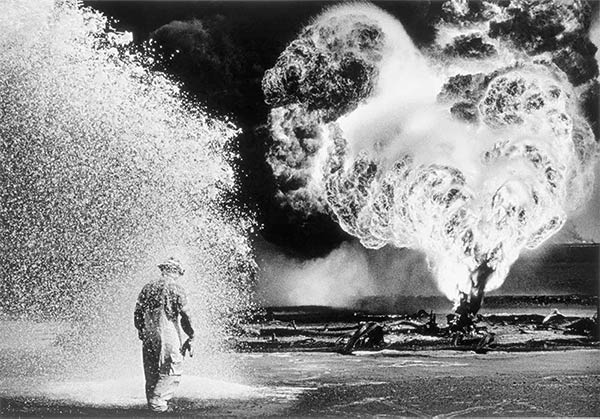
Salgado on Humanatarian Photography
I don’t want anyone to appreciate the light or the palette of tones. I want my pictures to inform, to provoke discussion – and to raise money.
I try with my pictures to raise a question, to provoke a debate, so that we can discuss problems together and come up with solutions.
We can take a picture that communicates, one where we can see the problems and the people from around the world. We show the people of Bangladesh to others so they can understand them. I have tried to bring about better communication between people. I believe that humanitarian photography is like economics. Economy is a kind of sociology, as is documentary photography.
We are one human race, and there must be understanding among all men. For those who look at the problems of today, my big hope is that they understand. That they understand that the population is quite big enough, that they must be informed that they must have economic development, that they must have social development, and must be integrated into all parts of the world.
What I want is the world to remember the problems and the people I photograph. What I want is to create a discussion about what is happening around the world and to provoke some debate with these pictures. Nothing more than this. I don’t want people to look at them and appreciate the light and the palate of tones. I want them to look inside and see what the pictures represent, and the kind of people I photograph.
Quotes on Photographing People
If you take a picture of a human that does not make him noble, there is no reason to take this picture. That is my way of seeing things.
You need to be accepted by reality.
I work alone. Humans are incredible, because when you come alone, they will receive you, they accept you, they protect you, they give you all things that you need, and they teach you all things you must know. When you come with two persons or three persons, you have a group in front of them. They don’t discuss with the new persons what is important to them…
There are moments that you suffer a lot, moments you won’t photograph. There are some people you like better than others. But you give, you receive, you cherish, you are there. When you are really there, you know when you see the picture later what you are seeing.
I tell a little bit of my life to them, and they tell a little of theirs to me. The picture itself is just the tip of the iceberg.
It’s not the photographer who makes the picture, but the person being photographed.
The picture is not made by the photographer, the picture is more good or less good in function of the relationship that you have with the people you photograph.
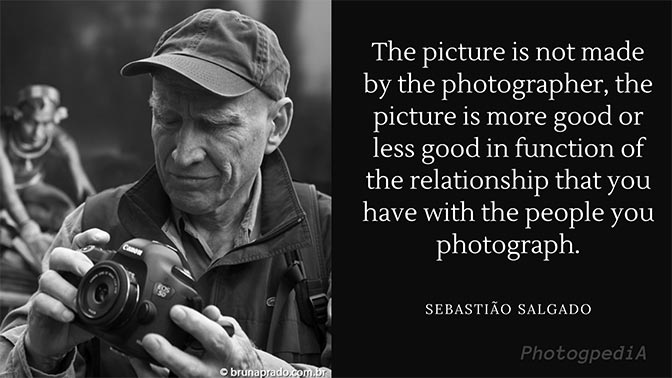
The Planet
So many times I’ve photographed stories that show the degradation of the planet. I had one idea to go and photograph the factories that were polluting, and to see all the deposits of garbage. But, in the end, I thought the only way to give us an incentive, to bring hope, is to show the pictures of the pristine planet – to see the innocence.
In the end, the only heritage we have is our planet, and I have decided to go to the most pristine places on the planet and photograph them in the most honest way I know, with my point of view, and of course it is in black and white, because it is the only thing I know how to do.
I discovered that close to half the planet is ‘pristine.’ We live in towns such as London, Paris or Sao Paulo and have the impression that all the pristine areas are gone, but they are not.
We are animals, born from the land with the other species. Since we’ve been living in cities, we’ve become more and more stupid, not smarter. What made us survive all these hundreds of thousands of years is our spirituality; the link to our land.
I can be an artist a posteriori, not a priori. If my pictures tell the story, our story, human story, then in a hundred years, then they can be considered an art reference, but now they are not made as art. I’m a journalist. My life’s on the road, my studio is the planet.
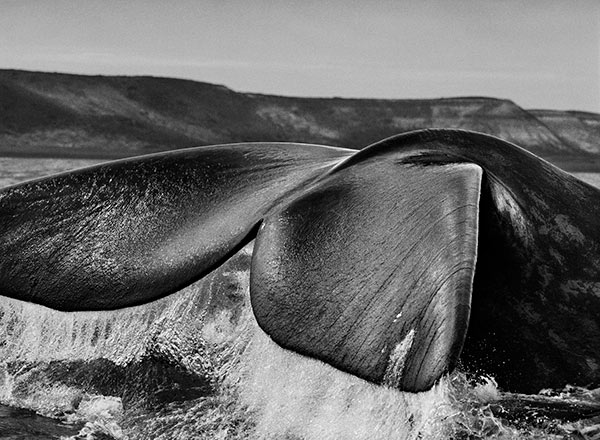
Sebastiao Salgado Quotes on Projects
I very much like to work on long-term projects…There is time for the photographer and the people in front of the camera to understand each other. There is time to go to a place and understand what is happening there… When you spend more time on a project, you learn to understand your subjects. There comes a time when it is not you who is taking the pictures. Something special happens between the photographer and the people he is photographing. He realizes that they are giving the pictures to him.
When I started Genesis I was 59 and I thought I was an old man. But now I am going to be 70 and I feel fine so I am ready to start again. Life is a bicycle: you must keep going forward and you pedal until you drop.
Most of the information we now get is through television and is mutilated. Photography offers the opportunity to spend much more time on a topic. It’s relatively cheaper medium, and can allow a photographer really to live in another place, show another reality, get closer to the truth.
When you work fast, what you put in your pictures is what your brought with you – your own ideas and concepts. When you spend more time on a project, you learn to understand your subjects. There comes a time when it is not you who is taking the pictures. Something special happens between the photographer and the people he is photographing. He realizes that they are giving the pictures to him.
You can sit in your house and be a great writer. But with photography the story is outside the door. You have to go and you have to go far.
The big privilege of photography is to go where you like; you are a free bird, you are alone in this trance. When you really get inside something, that is part of the trance. It is total joy.

What’s your Favorite Sebastiao Salgado Quote?
Have a favorite Sebastiao Salgado quote from the list? Let us know in the comment section below.
Don’t forget to bookmark this page, or print it out, and refer to it next time you need some inspiration. Like the article? We would be grateful if you could share it with other photographers.
To learn more about Salgado’s remarkable photography, check out the image archive on his Amazonas Images website.
Looking for more words of wisdom from master photographers? Visit the quotes section of Photogpedia for more great photography quotes.
Related Quote Articles:

